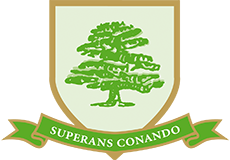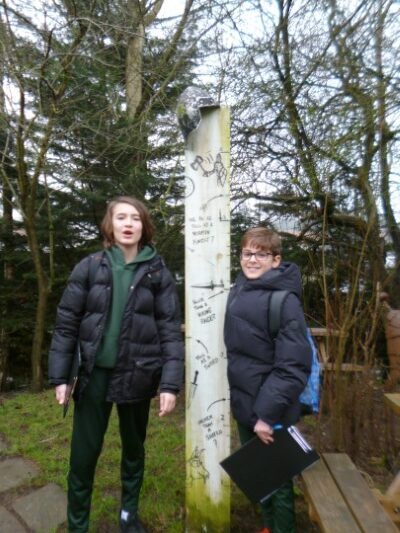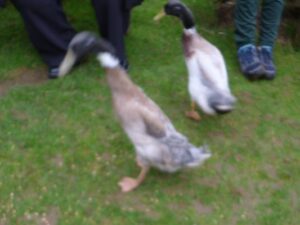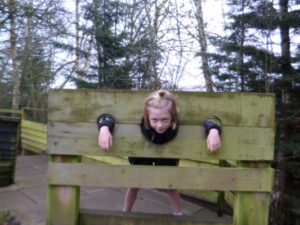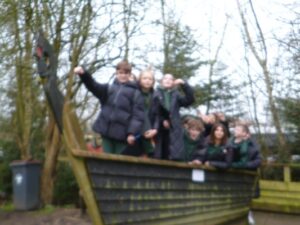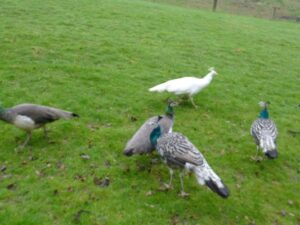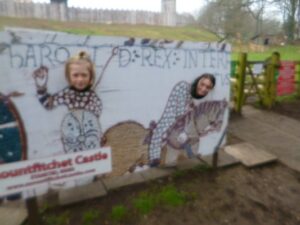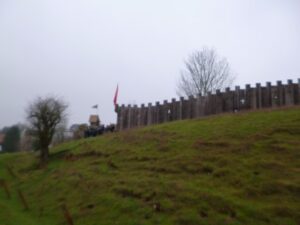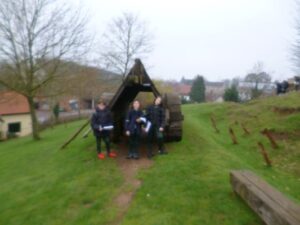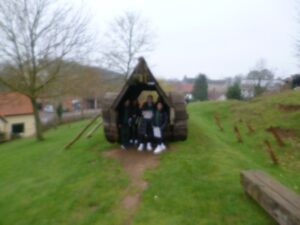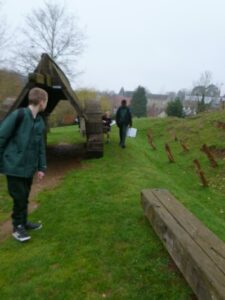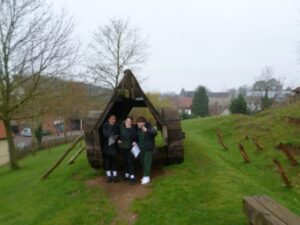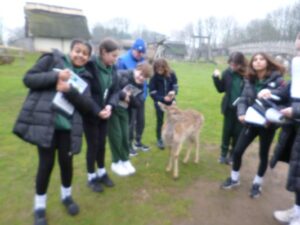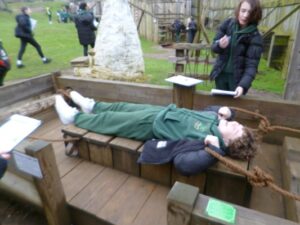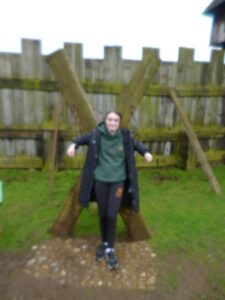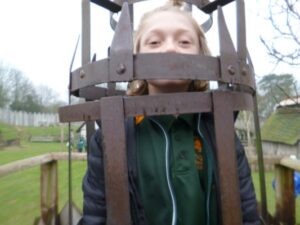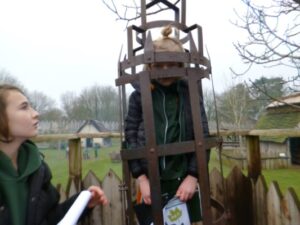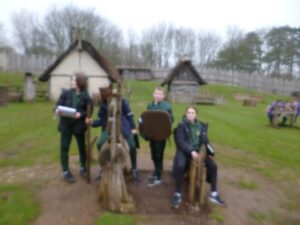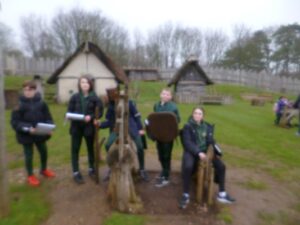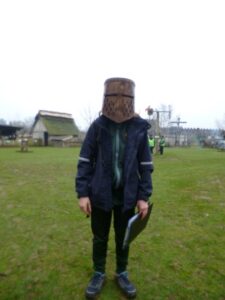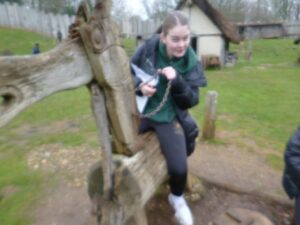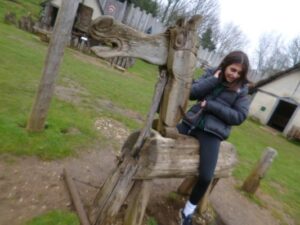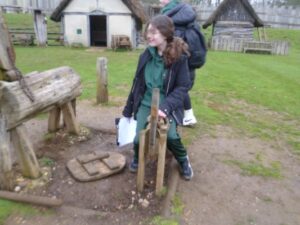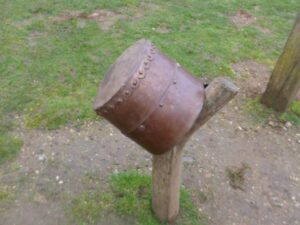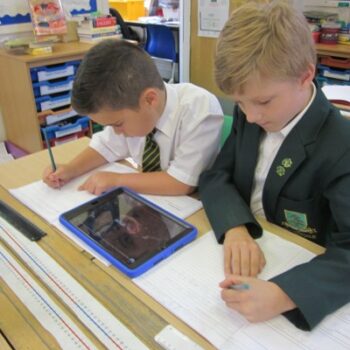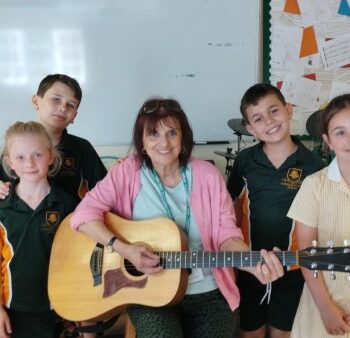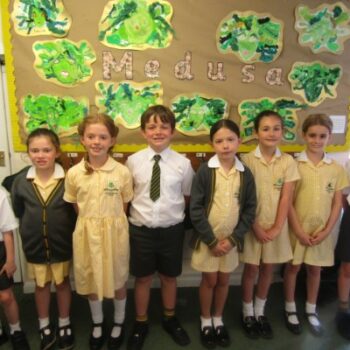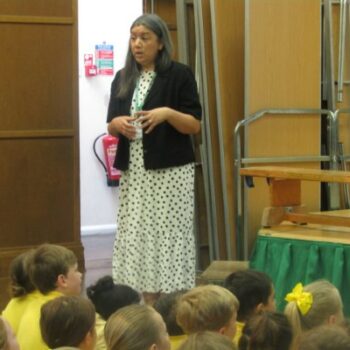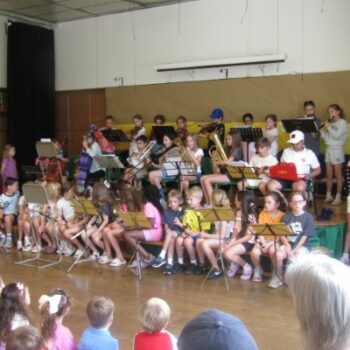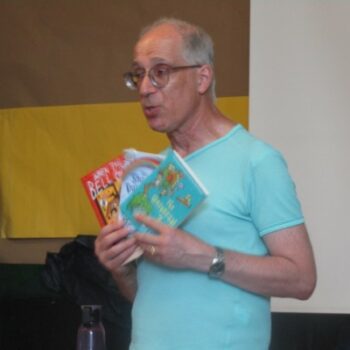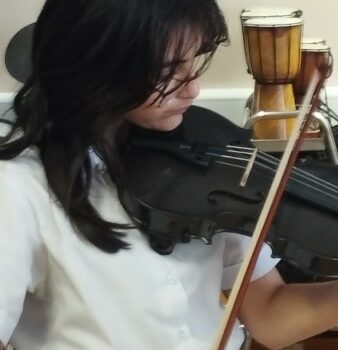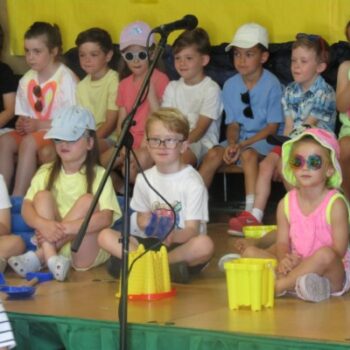On Monday 11th January Year 7 visited Mountfitchet Castle in Stansted.
This reconstructed Norman Motte and Bailey castle allowed us to see in real life what we had been studying in class. As we approached the castle we could see the siege tower in position and ready to attack It was much larger than the textbooks suggested. The dry moat was visible. It could be soaked in oil and set alight to stop an invading army, and was dotted with pointed stakes to damage any horses that did make it this far up the hill. As we entered under the portcullis we saw the Plague stone. In times of pestilence this was filled with vinegar and newcomers were encouraged to wash their money in the substance to prevent the spread of disease. On entering the village we could see a variety of small dwellings including the blacksmiths, the brewer’s hut, the weaver’s house and the surgeon’s house. They were all pretty basic. It was clear that they did not waste anything. When they killed an animal they used absolutely every part of it. Bones were used for tools, sheep bladders were made into drinking vessels and hides were used for rugs and clothes. What fascinated us the most were the methods of punishment doled out in the medieval times. We saw a ducking stool, a prison, many pillories and stocks, a rack, a St Andrew’s cross and a gibbet. We enjoyed trying out some of the simulator activities, trying to aim the catapult at the oncoming attackers and gauging the accuracy of our arrows. Our final stop on the tour was the inner bailey where the Grand Hall and Baron’s quarters were. These were more sophisticated than the rest of the buildings and were draped in richer and warmer materials. As well as stepping back into history we got to spend time feeding and stroking the rescue animals including ducks, geese, deer, goats and peacocks.

